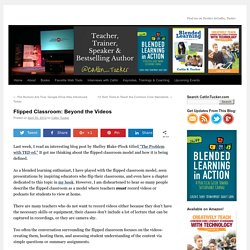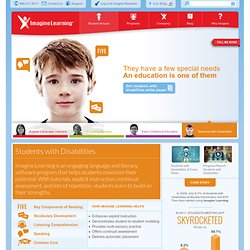

SchoolTube. What Do Emotions Have to Do with Learning? Thinkstock When parents and teachers consider how children learn, it’s usually the intellectual aspects of the activity they have in mind.

Sidney D’Mello would like to change that. The University of Notre Dame psychologist has been studying the role of feelings in learning for close to a decade, and he has concluded that complex learning is almost inevitably “an emotionally charged experience,” as he wrote in a paper published in the journal Learning and Instruction earlier this year. During the learning experiments described in his paper, he notes, the participating students reported being in a neutral state only about a quarter of the time.
The rest of the time, they were were experiencing lots of feelings: surprise, delight, engagement, confusion, boredom, frustration. Flipped Classroom: Beyond the Videos. Last week, I read an interesting blog post by Shelley Blake-Plock titled “The Problem with TED ed.”

It got me thinking about the flipped classroom model and how it is being defined. As a blended learning enthusiast, I have played with the flipped classroom model, seen presentations by inspiring educators who flip their classrooms, and even have a chapter dedicated to this topic in my book. However, I am disheartened to hear so many people describe the flipped classroom as a model where teachers must record videos or podcasts for students to view at home. Imagine Learning: Students with Disabilities. Five Key Components of Reading No more roadblocks to reading.

Students with disabilities often struggle to acquire basic reading skills. Research indicates that these students benefit from instruction that is explicit and sequenced, ensuring that key prerequisite skills are met before more complex tasks are required. Imagine Learning provides explicit instruction in five basic reading skills: phonological awareness, phonics, fluency, vocabulary, and comprehension. Whether students are working to overcome comprehension deficits or processing deficits—or any number of roadblocks—Imagine Learning’s made-to-fit sequence of instructional activities reinforces the foundational skills that will best help them achieve literacy.